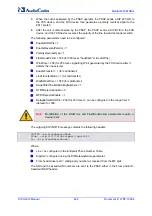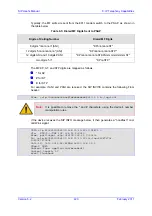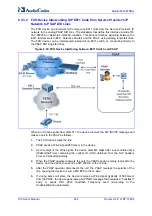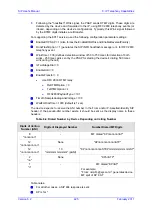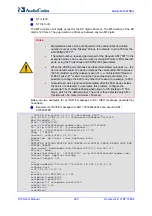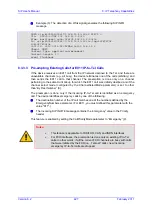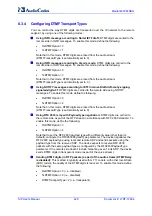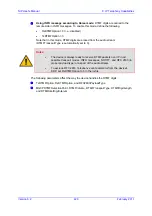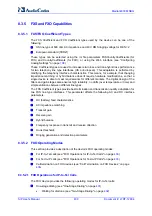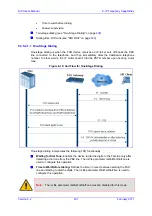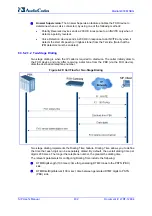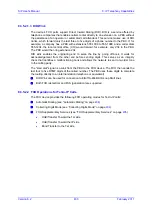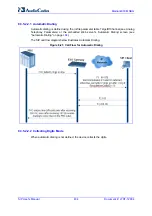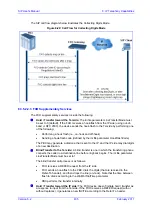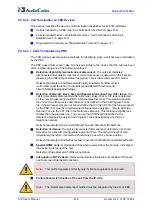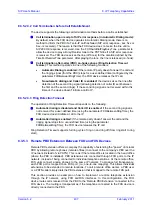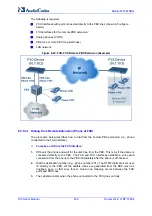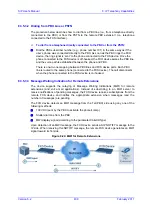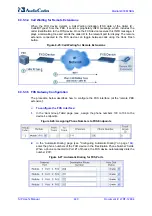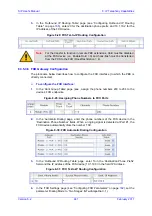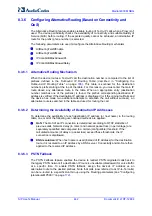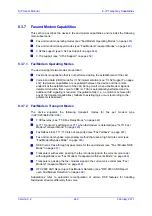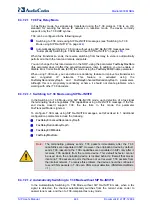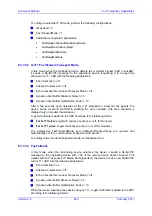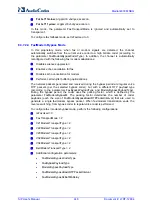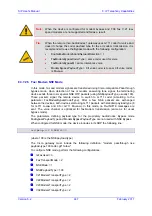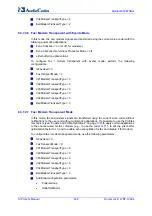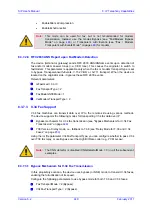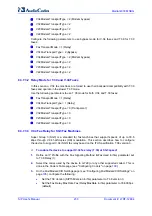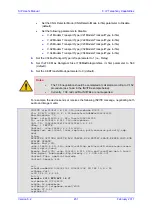
SIP User's Manual
436
Document #: LTRT-12804
Mediant 800 MSBG
8.3.5.2.3 Call Termination on FXO Devices
This section describes the device's call termination capabilities for its FXO interfaces:
Calls terminated by a PBX (see ''Call Termination by PBX'' on page
Calls terminated before call establishment (see ''Call Termination before Call
Establishment'' on page
)
Ring detection timeout (see ''Ring Detection Timeout'' on page
)
8.3.5.2.3.1 Calls Termination by PBX
The FXO device supports various methods for identifying when a call has been terminated
by the PBX.
The PBX doesn't disconnect calls, but instead signals to the device that the call has been
disconnected using one of the following methods:
Detection of polarity reversal/current disconnect:
The call is immediately
disconnected after polarity reversal or current disconnect is detected on the Tel side
(assuming the PBX/CO generates this signal). This is the recommended method.
Relevant parameters: EnableReversalPolarity, EnableCurrentDisconnect,
CurrentDisconnectDuration, CurrentDisconnectDefaultThreshold, and
TimeToSampleAnalogLineVoltage.
Detection of Reorder, Busy, Dial, and Special Information Tone (SIT) tones:
The
call is immediately disconnected after a Reorder, Busy, Dial, or SIT tone is detected
on the Tel side (assuming the PBX / CO generates this tone). This method requires
the correct tone frequencies and cadence to be defined in the Call Progress Tones
file. If these frequencies are not known, define them in the CPT file (the tone produced
by the PBX / CO must be recorded and its frequencies analyzed -- refer to Adding a
Reorder Tone to the CPT File in the Reference Manual). This method is slightly less
reliable than the previous one. You can use the CPTWizard (described in the
Reference Manual
) to analyze Call Progress Tones generated by any PBX or
telephone network.
Relevant parameters: DisconnectOnBusyTone and DisconnectOnDialTone.
Detection of silence:
The call is disconnected after silence is detected on both call
directions for a specific (configurable) amount of time. The call isn’t disconnected
immediately; therefore, this method should only be used as a backup option.
Relevant parameters: EnableSilenceDisconnect and FarEndDisconnectSilencePeriod.
Special DTMF code:
A digit pattern that when received from the Tel side, indicates to
the device to disconnect the call.
Relevant
ini
file parameter: TelDisconnectCode.
Interruption of RTP stream:
Relevant parameters: BrokenConnectionEventTimeout
and DisconnectOnBrokenConnection.
Note:
This method operates correctly only if silence suppression is not used.
Protocol-based termination of the call from the IP side
Note:
The implemented disconnect method must be supported by the CO or PBX.
Summary of Contents for Mediant 800 MSBG
Page 2: ......
Page 366: ...SIP User s Manual 366 Document LTRT 12804 Mediant 800 MSBG Reader s Notes ...
Page 372: ...SIP User s Manual 372 Document LTRT 12804 Mediant 800 MSBG Reader s Notes ...
Page 390: ...SIP User s Manual 390 Document LTRT 12804 Mediant 800 MSBG Reader s Notes ...
Page 404: ...SIP User s Manual 404 Document LTRT 12804 Mediant 800 MSBG Reader s Notes ...
Page 616: ...SIP User s Manual 616 Document LTRT 12804 Mediant 800 MSBG Reader s Notes ...
Page 636: ...SIP User s Manual 636 Document LTRT 12804 Mediant 800 MSBG Reader s Notes ...
Page 652: ...SIP User s Manual 652 Document LTRT 12804 Mediant 800 MSBG Reader s Notes ...
Page 886: ...SIP User s Manual 886 Document LTRT 12804 Mediant 800 MSBG Reader s Notes ...

